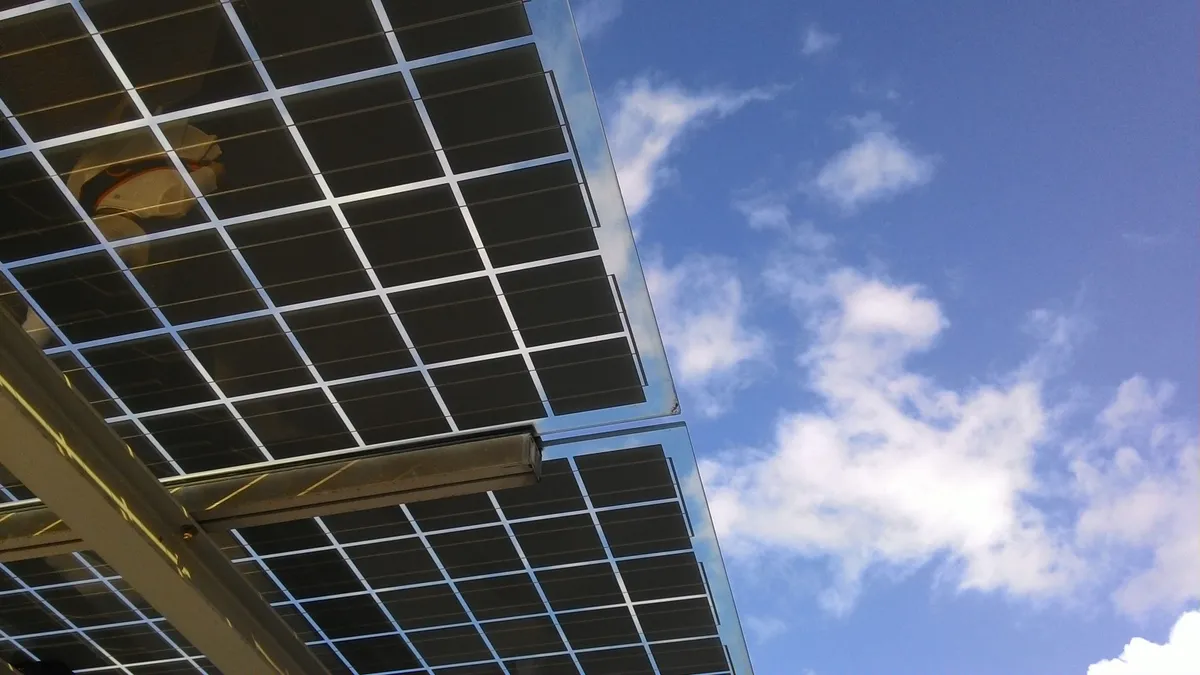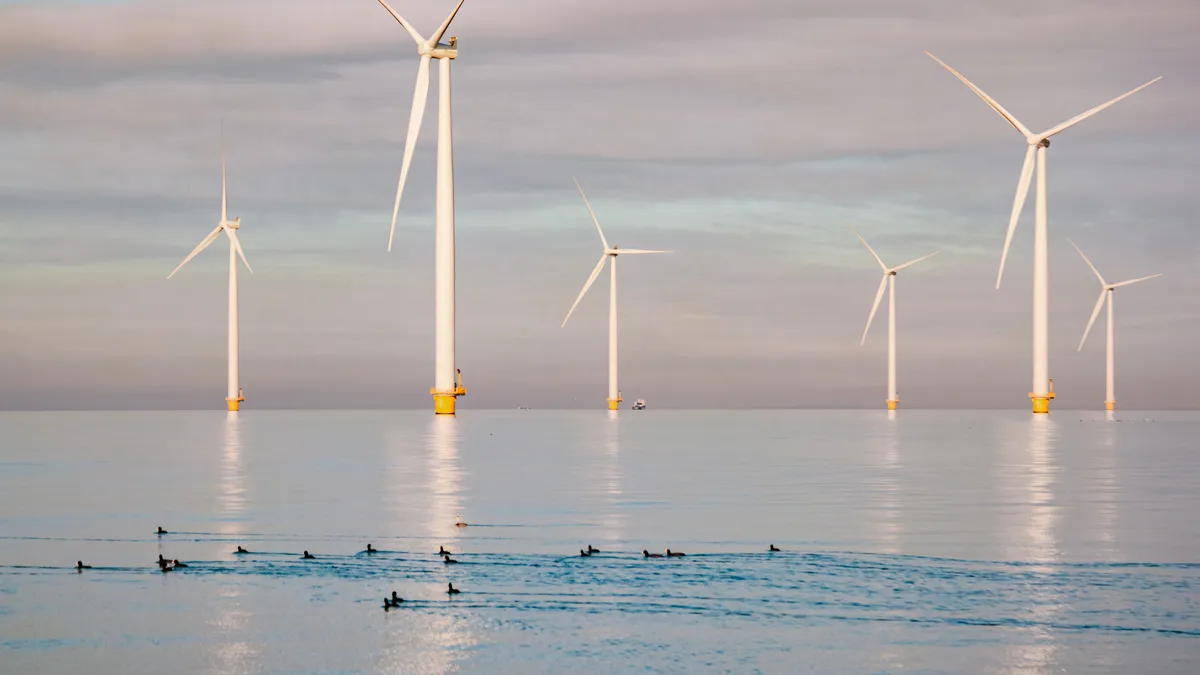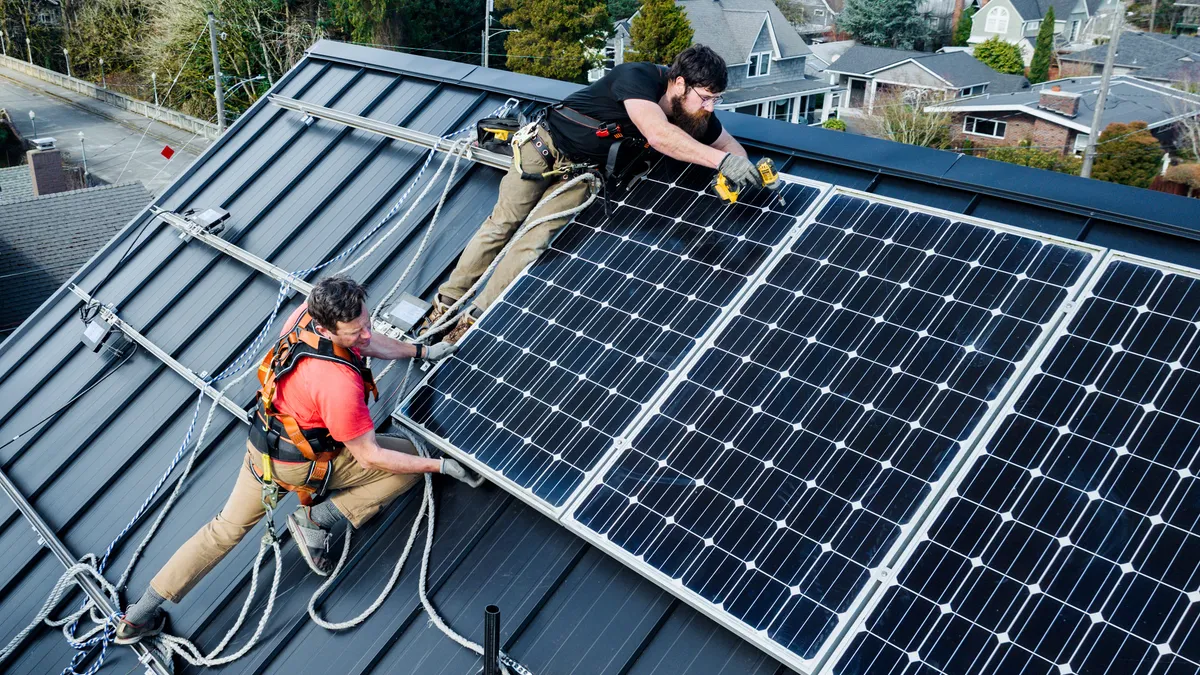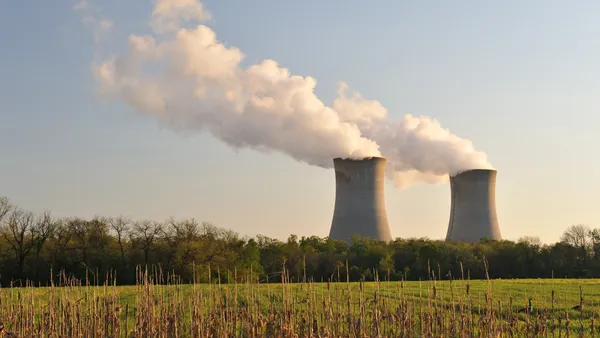A long-awaited change to California’s regulations on the handling of solar panel waste is expected to take effect later this year, with implications that could shape the developing U.S. solar panel recycling industry.
The California Department of Toxic Substances Control (DTSC) is poised to classify solar panels as a subset of hazardous waste known as universal waste – a change that, legal experts say, makes recycling the panels easier in several ways. In the long run, this move could create a regulatory model that other states can follow, a critical development as the amount of photovoltaic (PV) solar panels that will need to be handled greatly increases in coming decades.
California – which in 2018 produced about two-fifths of all electricity generated by PV solar, according to the U.S. Energy Information Administration (EIA) – attempted to change this regulation seven years ago. But the state’s Office of Administrative Law found the proposed classification was not consistent with federal law, driving the DTSC to seek approval from the U.S. EPA. At the beginning of 2020, the EPA authorized the DTSC’s proposed changes to its hazardous waste program, making it federally enforceable.
“This is the last step in the approval process for regulations to be adopted,” a DTSC spokesperson told Waste Dive. “The PV module universal waste regulation will become effective - earliest expected date of Oct. 1, 2020, - when the regulation package is approved by [the Office of Administrative Law].”
The EPA describes universal waste as subject to a “streamlined” set of standards compared to other types of hazardous waste. The new classification affects how long solar panel waste can be held on site before it is required to be transferred to another facility and reduces requirements for testing for certain hazardous materials.
For example, under the current classification in California, a generator of solar panel waste must move it off-site in under 90 days after generation. But under the universal waste classification, the waste can stay on-site for up to a year, allowing it to be transported to recycling facilities in bulk.
“Some of the advantages of managing PV waste as universal wastes are: reduction of the generator regulatory requirements, accumulation of waste for up to one year, no need for a hazardous manifest, and reduction of the amount of labeling and recordkeeping,” according to a study by researchers from the University of California, Santa Barbara (UCSB).
This new approach comes as the demand for ways to efficiently and economically recycle solar panels is set to jump due to the quickly increasing prominence of solar power in global electricity generation.
Because the boom in solar power is relatively new, the solar panel recycling industry can be considered to be in its “infancy,” according to Andreas Wade, global sustainability director for First Solar, a major solar module manufacturer that also operates several solar panel recycling facilities around the world. “We don’t have that much end-of-life [PV solar] on a global scale because of the long life” of panels, Wade said in an interview with Waste Dive. Panels produced today can last around 30 years.
From 2010 to 2019, net summer solar PV power capacity in the U.S. alone grew from 393 MW to 35,571 MW, according to the EIA. While solar panels currently make up just a small amount of e-scrap, the need for solar panel disposal will rise dramatically over the next few decades as projects being built today reach the end of their useful lives.
“The industry is working with several vendors to establish responsible, comprehensive end-of-life management programs that account for the volume anticipated over the next few decades,” Evelyn Butler, senior director of codes and standards for the Solar Energy Industries Association, said in an email to Waste Dive. “For those modules that are recycled, nearly 100% of the materials used in PV modules are recyclable or reusable.”
About 50 million metric tons of e-scrap are produced annually around the world, according to the United Nations Environment Programme. Amidst the mountains of computer parts, smartphones and various other devices, solar panels may add up to only about 250,000 tons, according to a 2016 scenario projection from a report from the International Renewable Energy Agency.
But based on projections from the UCSB study, looking at the U.S. alone, PV solar waste may rise to 1.3 million metric tons in 2040 and 5.5 million metric tons in 2050. Globally, it could total 80 million metric tons by 2050, according to a recent National Renewable Energy Laboratory report.
In the U.S., solar waste is currently governed by a “patchwork” of state and local regulations that can make recycling “difficult” for solar asset owners, Wade said. For example, solar project owners frequently have to buy a surety bond to guarantee decommissioning costs will be covered, but exactly what disposal measures are required by the bond may differ at the state or even county level. “There is a need to develop a common approach and harmonized methodology for decommissioning cost bonds,” he said.
As the first state to act, California’s regulatory move could be a step toward tying together that patchwork. “Other states may use the California rule as a roadmap for their own regulations,” attorneys from the law firm Baker Botts wrote in a 2019 blog post about the universal waste classification.
In addition, the U.S. EPA looks to the states to see "how their programs have worked in practice and whether their definitions and regulations should be adopted or refined at the federal level," Baker Botts attorney Martha Thomsen said in an interview with Waste Dive. For example, in 2019, the agency finalized a rule designating aerosol cans as universal waste after several states, including California, took that step. In a statement, the EPA said this final rule “offers a more uniform, nationwide handling system.”
Overall, Europe’s public and private system for handling solar panel waste is “three to four years ahead of the curve” compared to that of the U.S., Wade said. But, he added, “that is beginning to change” due to a number of initiatives.
At the federal level, the Toxicity Characteristic Leaching Procedure is used to characterize waste as hazardous or non-hazardous. However, there is no uniform procedure in U.S. labs for preparing testing samples. Wade pointed to recent research from the Arizona State University's Photovoltaic Reliability Laboratory which compares various sample preparation procedures. Their work suggests the industry may yet decide on one uniform sample preparation procedure, thus simplifying the testing process, Wade said.
For solar panels already in use, current California regulations state the generators of solar panel waste, (such as the project operator) bear the burden of performing testing to confirm if their material is hazardous. But under the universal waste classification proposed in that state, project operators, waste handlers and transporters can opt to treat the panels as universal waste without the need for testing.
At the beginning of 2020, the U.S. EIA reported the milestone that electricity generated by renewable sources would eclipse electricity generated by nuclear and coal for the first time ever. As solar power's role as a core component of U.S. energy grows, the need for solutions to practical problems facing panel recycling, like the lack of a uniform testing standard, will also likely grow.
“Responsible management of PV waste is an indispensable part of the transition to renewable energy,” the UCSB study said.





















